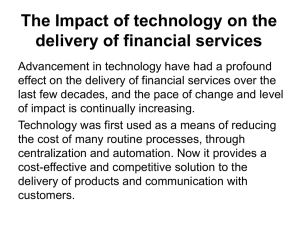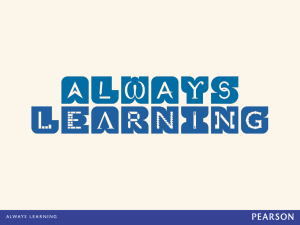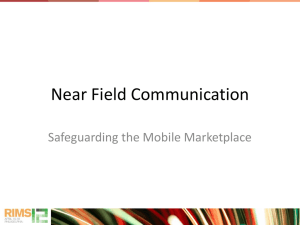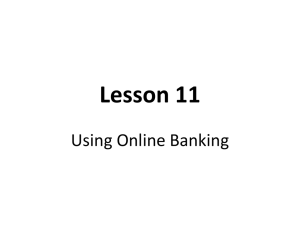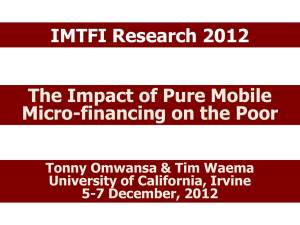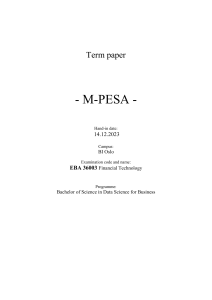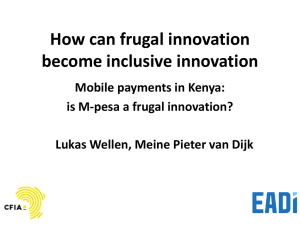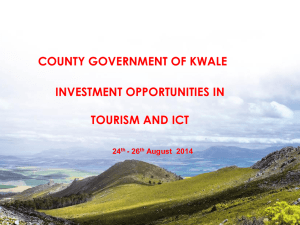Bank-Based Model - Alliance for Financial Inclusion
advertisement
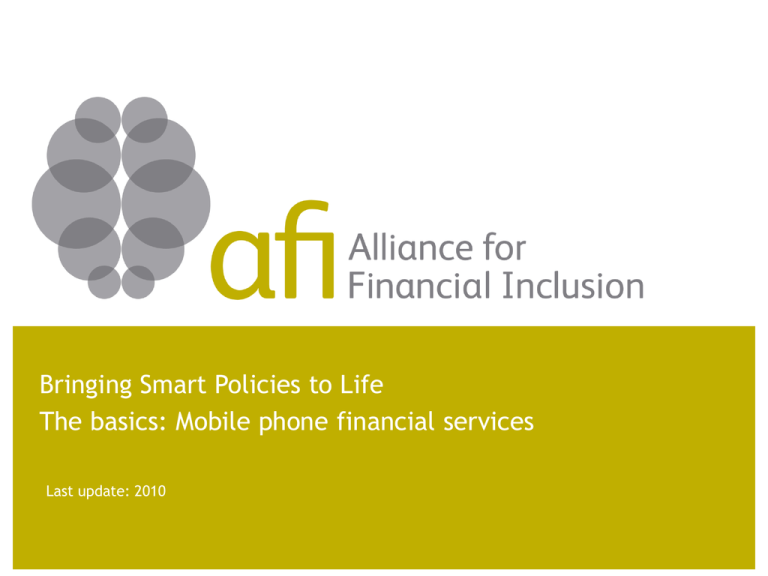
Bringing Smart Policies to Life The basics: Mobile phone financial services Last update: 2010 Overview Mobile phone penetration is soaring, with subscriptions more than quadrupling since 2002, to more than 4 billion globally. • Well over half of these live in developing countries • Huge potential for expanding financial access at a lower cost than through brick-and-mortar branches Potential Market Closing the gap between unbanked people with access to mobile phones is one opportunity to scale up access to finance % mobile phone penetration 97% 100% Finland 50% Mexico South Africa 10% Kenya The Philippines Colombia % of banked people % Banked people % Mobile Penetration Sources: Banked Honohan 2007; Penetración Celular: ITU; WireIess Intelligence 4:2002, 4:2006 Datos México: Notes on Branchless Banking Policy and Regulation in Mexico; CGAP 3 Benefits • Expand financial access to the unbanked by: - Offering convenient and real-time transactions - Dramatically reducing transaction costs Microfinance Loans and Domestic Remittances - Expanding points of access – reaching remote areas - Lessening the need to carry cash - security Service offering • Mobile phones can be used to deliver a range of banking services, including: – – – – – – – money transfers retail purchases bill payments welfare payments and other social services savings withdrawals remittances • Transaction data can be used to develop customers’ credit histories: • Can lead to a wider range and depth of inclusion Policy Question :AML/CFT • Traditional AML/CFT rules may need to be updated for virtual or outsourced relationships & transactions – Pose unique risks but also opportunities, as mobile phone transfers leave trails • FATF advocates a risk-based approach that allows regulation to be tailored to perceived risk – In practice, many countries face challenges in achieving compliance this way • Standard KYC procedures may hurt outreach to lowincome customers – Some policymakers have simplified procedures to allow the development of products with a low-risk profile Policy Question: interoperability? • Interoperability enables customers to gain access to a different operator’s m-banking platform • Question of market structure and competition policy – Mandating interoperability may promote competition and benefit consumers – Early movers may resist, as they can lose competitive edge • Customers still need to convert e-money to cash, using bank branches, ATMs or agents – Adds another level to interoperability - sharing cash in/cash out infrastructure can support outreach at lower cost Policy Question: Protecting Consumers • Mobile phone financial services present new consumer protection challenges – – – – Large distance between providers and customers Agents may lack clear incentives or liability for transparency Cash in/out function by agents may open the door to fraud Requires technology-tailored solutions to data security and privacy, redress mechanisms and pricing transparency • Including technology issues in financial education can help reduce information asymmetry • Bringing operators under central bank supervision may also help unfamiliar customers feel more at ease Example: Kenya • M-PESA launched in 2007 when only 23% of Kenyans had a bank account but 80% access to a mobile phone. • The service has grown into one of the most successful in the world, with more than 8.5 million customers and over 12,000 agents by the end of 2009. Kenya “MNO-Based” Model: M-PESA Client MNO Agent Cash In/Out Safaricom With a loaded M-Pesa Account Clients can… • Transfer & receive funds •Pay Bills •Withdraw •Donate Bank M-Pesa account funds are pooled and deposited by Safaricom into an account held in trust at a commercial bank. In the M-Pesa “MNO-Based model,” clients cash-in/out at thousands of M-Pesa agents. M-Pesa wallets are held by Safaricom & are not classified as deposits. EMoney is backed 1:1 by pooled funds deposited in trust at a commercial bank. 10 Example: The Philippines • Two mobile banking operations (Smart Communications and Globe Telecom/G-Cash) have an estimated 71.2 million customers (90.5 Population) • Mobile phone transactions are estimated to cost just 1/5 of those executed through bank branches (US$0.50 versus US$ 2.50) Philippines “Bank-Based” Model: SMART Money Client SMART Agent Cash in/out of Smart money wallet SMART Money Banco D’Oro With a loaded Emoney wallet clients can … •Purchase •Deposit • Withdraw • Pay Bills • Transfer Money •ATM Withdraw a Using just their mobile phone The E-money issuer in this model is Banco D’Oro. Individual Smart E-wallet accounts are held on the books of the bank In the SMART Money “Bank-Based Model,” Banco D’oro issues E-Money using the SMART E-wallet platform that allows clients to transact. 12 Mexico Mobile Banking Model Under the Mexican model, TelCo is a banking agent because the Mexican Banking law only allows a banking institutions to accept deposits from general population. TelCo Retailer Client Face to Face with Client TelCo Bank (Banking Agent) Basic Banking Services: • Deposits • Withdraws • Bill payments • Remittances Deposits are withheld and managed by the bank 13 Mexico Mobile Banking Model Banking institution is responsible for the implementation of the AML/CFT regulation but some specific activities are required of the TelCo. Bank • Monitoring client transactions • Report suspicious and significant transactions (over US$10,000) • Open mobile banking accounts and apply simplified KYC and CDD TelCo • Back office for handling database of banking transactions and push a copy to the bank. 14 Thank you! © Alliance for Financial Inclusion 2010 info@afi-global.org www.afi-global.org

